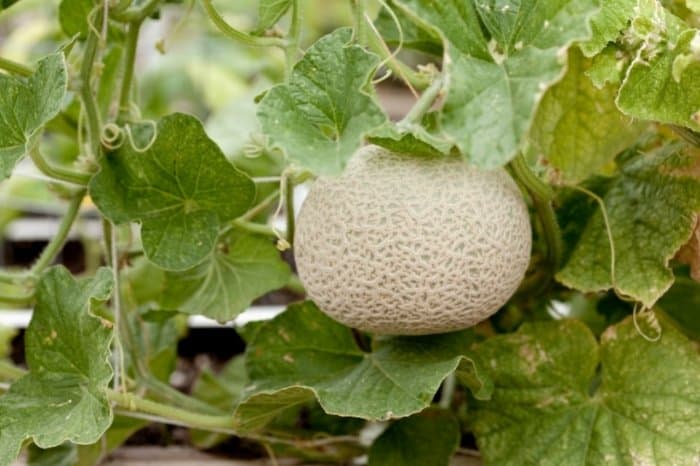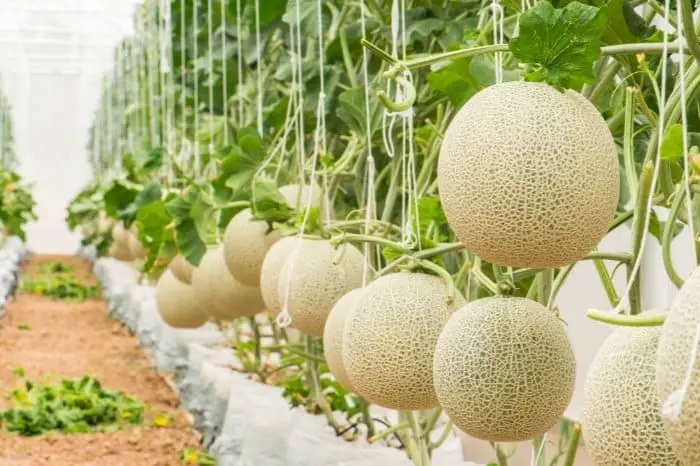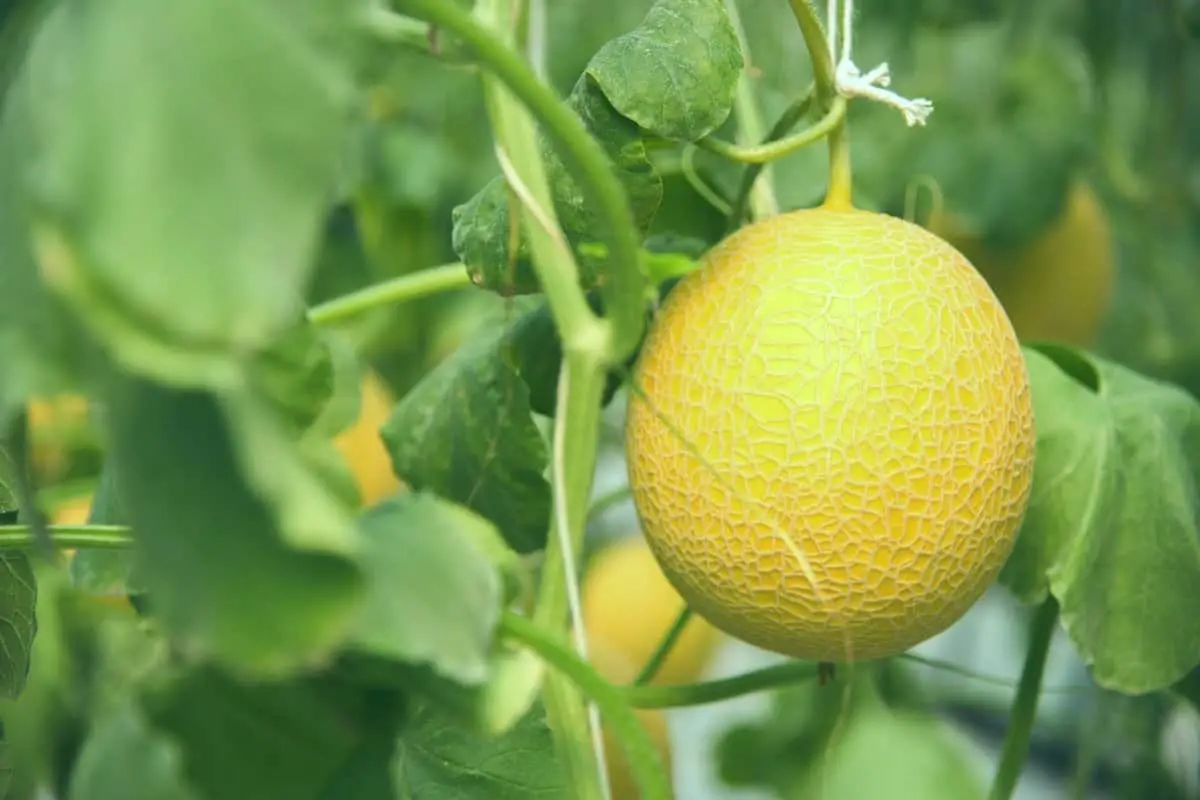Last Updated on January 31, 2022 by
We will discuss where do cantaloupe grows and its growth process to help you learn how to grow your own, in this article.
Growing cantaloupe at home is rewarding as it offers you these fruits that have an explosive sweet taste that cannot be compared to the store-bought friends.
Give these fruits plenty of sunlight, moisture, and heat and you will have the best fruits.
Cantaloupe requires up to 2 to 3 months of heat to bring out that sweetness. This requirement makes it hard to grow them in the northern regions, but not impossible.
If you live in these regions, you can use a black ground cover to keep your soil warm or use floating row covers to help trap warm air near plants.
Gardeners across the country can successfully be a part of growing their own cantaloupe and enjoying the homegrown goodness of these fruits.
These sun-loving fruits have plenty of vitamin C and antioxidants in every bite, combining great taste with abundant nutrition.
Where Does Cantaloupe Grow?
Cantaloupes are best grown in areas that have warm soil of up to 70 degrees F and plenty of sun. The sun is what sweetens this fruit.
Cantaloupes love to sprawl around, you should plant them at least 36 to 42 inches apart in well-drained rich soils.
Cantaloupes require many nutrients when growing, therefore use several inches of compost and other rich organic matter to improve your soil before planting.
They also need plenty of water, so water them adequately to keep your soil moist and avoid wetting the foliage. Drip irrigation and soaker hoses are best for watering.

Provide mulching to eliminate weeds so that the vines can run freely and grow healthy.
Protect young fruits by getting them off ground. If you have good quality, mulching it will help keep the fruits from contact with soil. If you are growing them on the pot, an upside-down flowerpot would work well.
Do not pinch offshoots because an abundance of healthy foliage will help the plant produce sweet fruits.
To get the best flavorful fruits, allow the largest fruit to grow and pinch off any young fruits that start forming.
Harvest your cantaloupe when the ideal color and netting are pronounced.
Do You Want To Grow Cantaloupe? Know-How To Do It Here
Choose The Right Location
Cantaloupe loves a sunny location with well-draining soils rich in organic matter. Amend your soil with compost before planting. These two conditions will cause the fruit to thrive happily.
Choose To Grow Cantaloupe That Suits Your Region And Needs
-
-
Mini Sugar Cube – This typically takes only 75 days to mature. Its disease resistant and produces small fruits.
-
Ambrosia – It is resistant to powdery mildew and produces very sweet fruit.
-
Planter Jumbo – This fruit does best in hot climates and is resistant to powdery mildew
-
Hales Best Jumbo – It only takes about 80 days tomature and grows large and sweet fruits.
-
Chimayo Melon – This is a Spanish heirloom from Northern New Mexico.
-

Plant Your Cantaloupe At The Right Time
Cantaloupe prefers warm to hot weather, therefore, do not plant it early spring when the soil is still cold. Cantaloupe does best when you sow the seeds directly, but if need be, sow your seeds indoors. 2 weeks after the last frost date, check to see if the soil is warm enough to sow your seeds when the temperatures are about 65 degrees F.
In the cooler zones, start the seeds indoors about 3 weeks before the last frost date and transplant outdoors when the soil is around 65 degrees F and nighttime temperatures are above 50 degrees F. Do not disturb the roots when transplanting to avoid the shock.
In the desert of Arizona. The best time to plant is towards the end of February to July.
Eliminate All Chances Of Pests And Diseases
Do not plant your cantaloupe where you had previously planted members of the cucumber family (Cucurbitaceae) like squash, melons, and pumpkins.
When your fruits have formed, raise them off the ground with pots or melon cradles to increase their air circulation and eliminate rot and insects.
Bonide 811 Copper 4E Fungicide 16oz (473ML)
Use a melon hammock to support the hanging fruit.
If you notice powdery mildew, consider growing Ambrosia type or other disease-resistant varieties.
Inspect your leaves regularly for aphids and other harmful pests. Spray with water or treat with insecticidal soap if the problem persists.
Harvesting Cantaloupe
Cantaloupe once grown must be harvested at the right time. They continue to soften once picked but won’t get any sweeter than they were when you harvested them. Leaving it on the vine for as long as possible gives you a sweeter taste. However, you must know how long is too long. To know when to harvest check out some of these signs.
No Ready To Harvest Signs
-
- The rind is gray or green
- Netting on the cantaloupe is smooth
- The stem is firmly holding the fruit and must be forced to come off the fruit.
- The end opposite of the stem is hard
- It has no aroma
- Its vines are green
The Ready To Harvest Signs
-
- The rind is yellow
- Netting on the cantaloupe is rough
- The stem separates easily from the fruit
- The end of the stem is slightly soft
- It has a musky sweet aroma
- The vine around the fruit is dry and turns brown
Signs Of An Overripe Fruit
-
- It cracks
- It falls off the stem
- The fruit is mushy or too soft
- Has an overripe or rotten smell
FAQs
Where do cantaloupes grow best?
If you want to grow your own cantaloupes, here’s where they do best:
in hot, humid climates with rich, fertile soil that drains well. In these conditions, the plants can get quite large in a season. They also grow slowly, taking three to five years to reach maturity.
In cooler, drier climates, they need a longer growing season and have smaller fruits. The fruit is less sweet and more tart than those grown in the South. Cantaloupe is one of the easiest plants to grow. There are no major pests or diseases associated with it, and its only real concern is the occasional aphid.
Do cantaloupe plants need full sun?
They need full sun or can they be planted in a smaller container under the sunniest window sill.
The best way to start a new plant is to have it in a large pot, with plenty of soil, and place it in a sunny spot. You can give the plant a little fertilizer, but don't overdo it. When the plant is about six weeks old, you can transplant it into its permanent home. It will be more successful if it's moved from a shady spot to one that gets some sun.
Do cantaloupe plants climb?
They can be trained to grow in a vine up a trellis. The problem with the cantaloupe, though, is that it needs a lot of space for its fruit to ripen, and also it can't handle the heat. If you want to try it, get one of those big greenhouses.
What is the best month to plant cantaloupe?
Plant cantaloupes in early spring, before the soil warms up too much.
1. If possible, plant them in a greenhouse or hoop house until the weather gets warm enough to actually grow cantaloupes in the open garden.
2. Make sure you water them in dry soil, but not so much that you drown them.
Watering can also cause fruit drop and disease. 3. If your cantaloupe is too big for your pot, you can plant it in a large container with drainage holes.
Are cantaloupe easy to grow?
Cantaloupe are a great addition to any garden. But they can be quite difficult to grow. I have been growing cantaloupes for years and every year my garden gets bigger and bigger. Now I have the space to grow cantaloupes in a raised bed. They do need lots of space.
If you want to grow your melons in containers, then you need to grow them in a greenhouse. It's not hard to do, but it takes time and money. You have to heat and light them in the greenhouse.
You can get a cheap greenhouse for as little as $10,000, or you can spend a few thousand dollars to get a decent one that will last you for many years.
Where Are Cantaloupes Grown Conclusion
FAQs
Where do cantaloupes grow best?
If you want to grow your own cantaloupes, here’s where they do best:
in hot, humid climates with rich, fertile soil that drains well. In these conditions, the plants can get quite large in a season. They also grow slowly, taking three to five years to reach maturity.
In cooler, drier climates, they need a longer growing season and have smaller fruits. The fruit is less sweet and more tart than those grown in the South. Cantaloupe is one of the easiest plants to grow. There are no major pests or diseases associated with it, and its only real concern is the occasional aphid.
Do cantaloupe plants need full sun?
They need full sun or can they be planted in a smaller container under the sunniest window sill.
The best way to start a new plant is to have it in a large pot, with plenty of soil, and place it in a sunny spot. You can give the plant a little fertilizer, but don't overdo it. When the plant is about six weeks old, you can transplant it into its permanent home. It will be more successful if it's moved from a shady spot to one that gets some sun.
Do cantaloupe plants climb?
They can be trained to grow in a vine up a trellis. The problem with the cantaloupe, though, is that it needs a lot of space for its fruit to ripen, and also it can't handle the heat. If you want to try it, get one of those big greenhouses.
What is the best month to plant cantaloupe?
Plant cantaloupes in early spring, before the soil warms up too much.
1. If possible, plant them in a greenhouse or hoop house until the weather gets warm enough to actually grow cantaloupes in the open garden.
2. Make sure you water them in dry soil, but not so much that you drown them.
Watering can also cause fruit drop and disease. 3. If your cantaloupe is too big for your pot, you can plant it in a large container with drainage holes.
Are cantaloupe easy to grow?
Cantaloupe are a great addition to any garden. But they can be quite difficult to grow. I have been growing cantaloupes for years and every year my garden gets bigger and bigger. Now I have the space to grow cantaloupes in a raised bed. They do need lots of space.
If you want to grow your melons in containers, then you need to grow them in a greenhouse. It's not hard to do, but it takes time and money. You have to heat and light them in the greenhouse.
You can get a cheap greenhouse for as little as $10,000, or you can spend a few thousand dollars to get a decent one that will last you for many years.
Next time someone asks you where do cantaloupes come from, you have a better answer to give – They grow in a garden or a pot and you can grow them too.
The key to a sweet cantaloupe is lots of sugar that are made by leaves, therefore, protect your leaves by all means. Be on the lookout for fungus diseases that usually spread rapidly.
Alternaria leaf spot and stem blight produce spots on leaves. Stem blight also forms tan or bleached sections on stems and rot on fruit.
The common downy mildew causes yellow or pale green leaf spots, while powdery mildew brings white spots on leaves.
All these above fungal diseases are bad for your plant. Be sure to treat fungus diseases with fungicides.
If you are not sure, check with your local gardening center or extension agent to learn which disease you are fighting and which fungicides are approved in your area.
Caroline is a gardener who loves to get down to the nitty–gritty of gardening. She proudly proclaims herself as a ‘dirt worshipper‘ and can often be found deep in the garden, covered in soil and singing to her plants. As a self–proclaimed ‘plant whisperer‘, Caroline believes that plants need love and attention just like any other living thing, and she loves to give them both. When she‘s not tending to her garden, you can often find her researching the latest gardening trends, or teaching others how to make their gardens thrive



